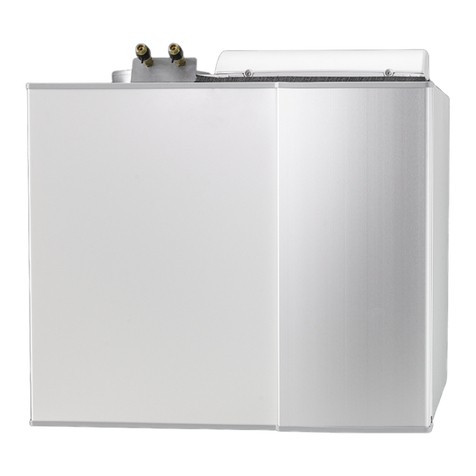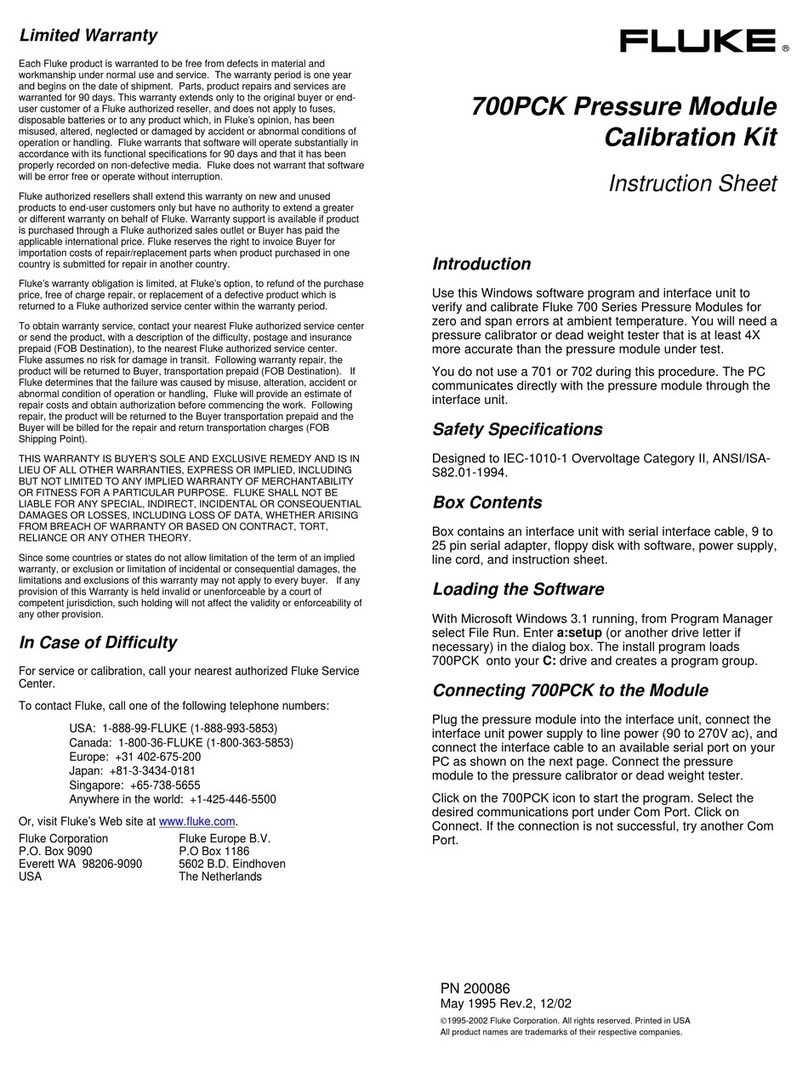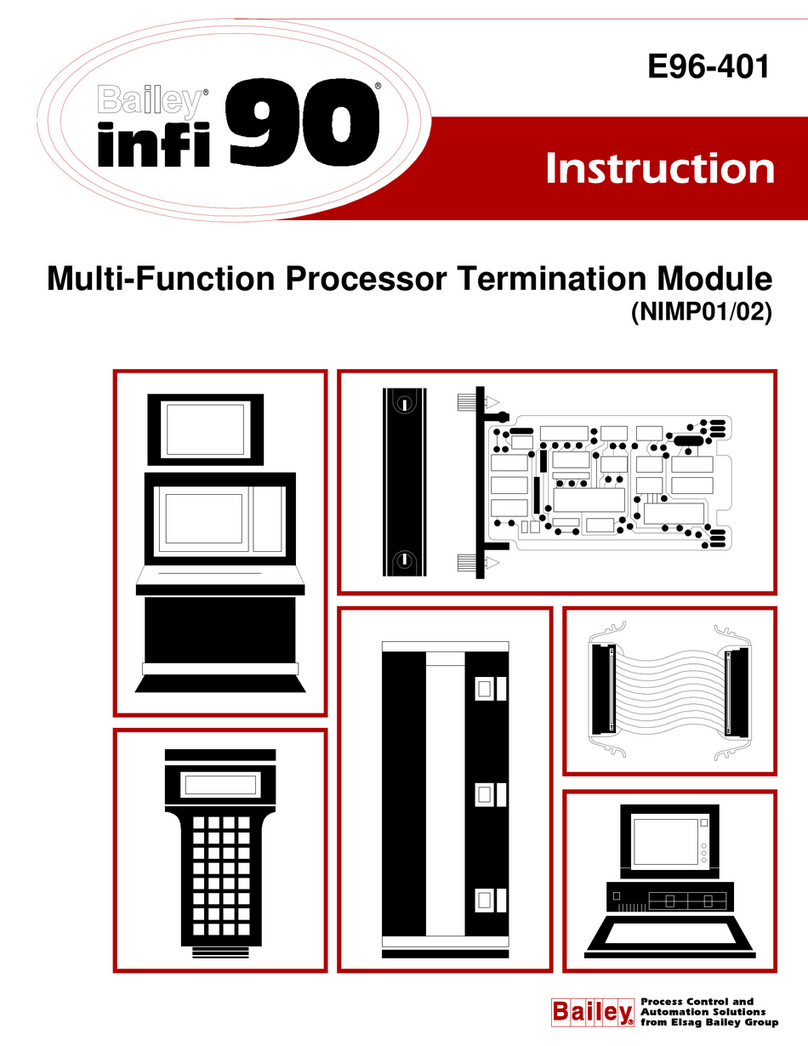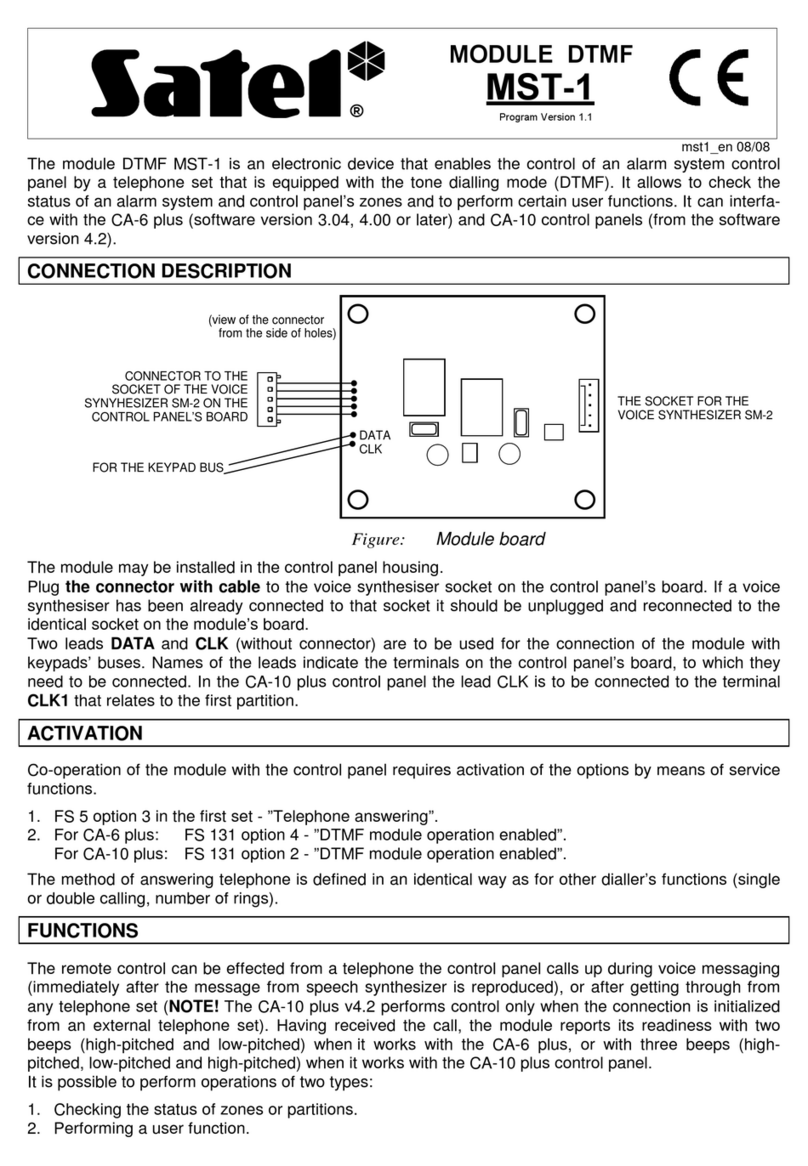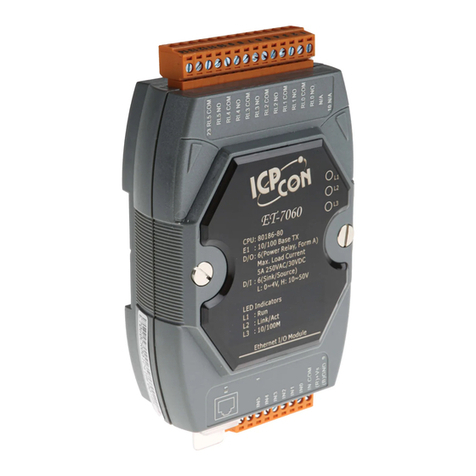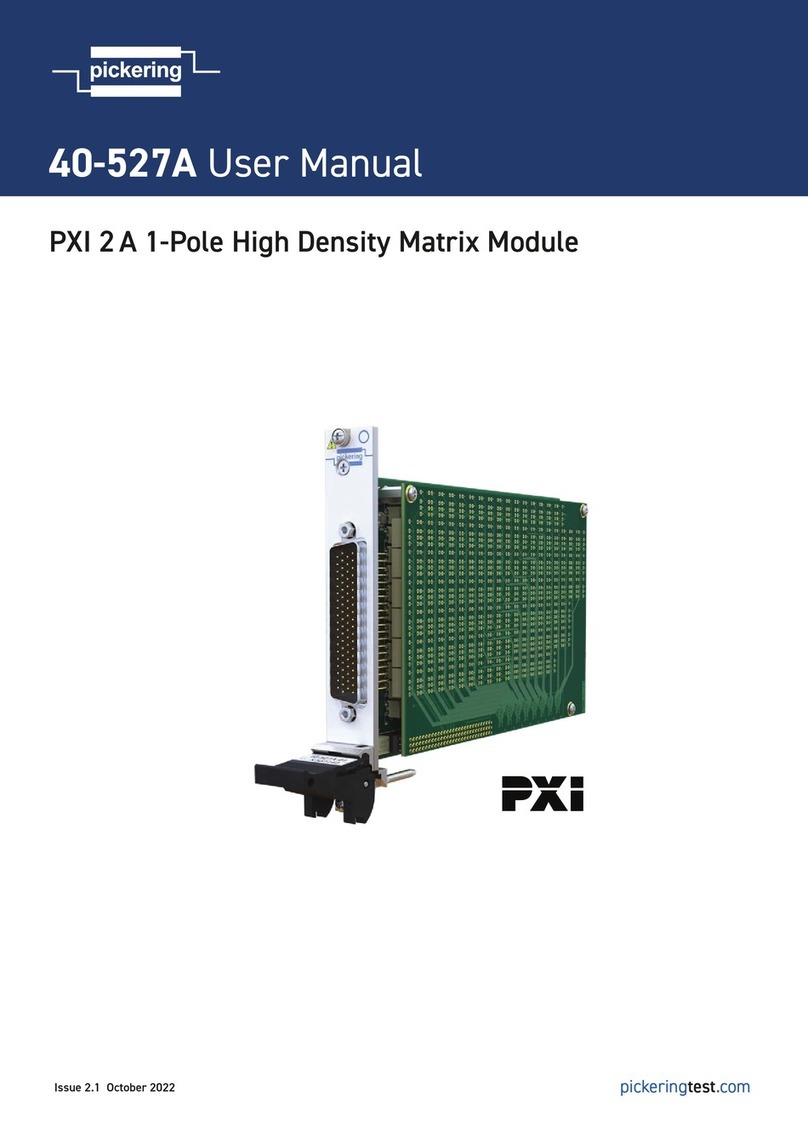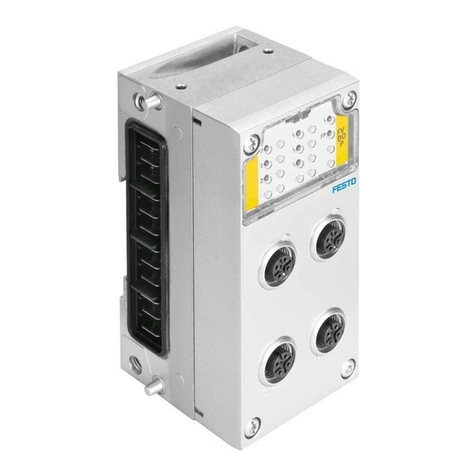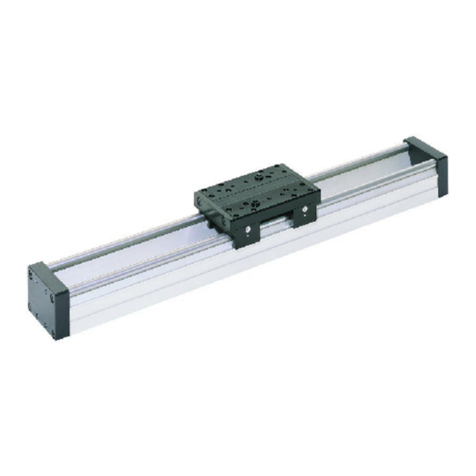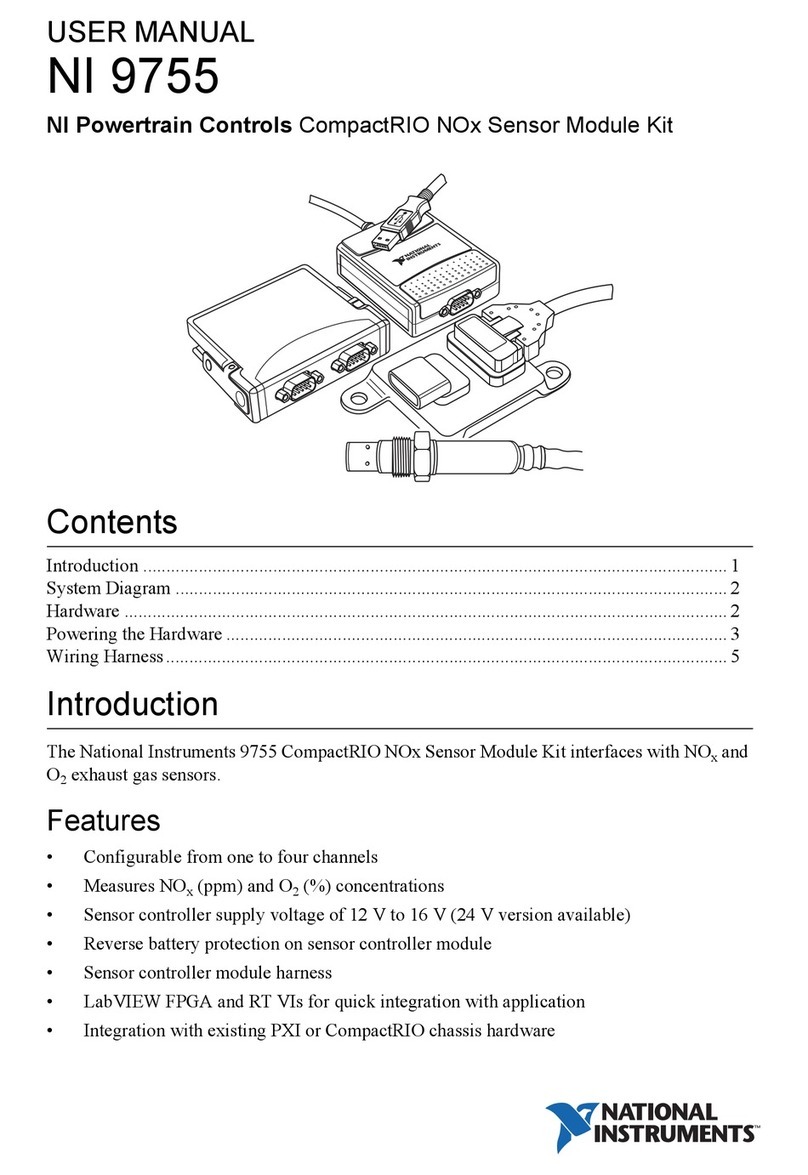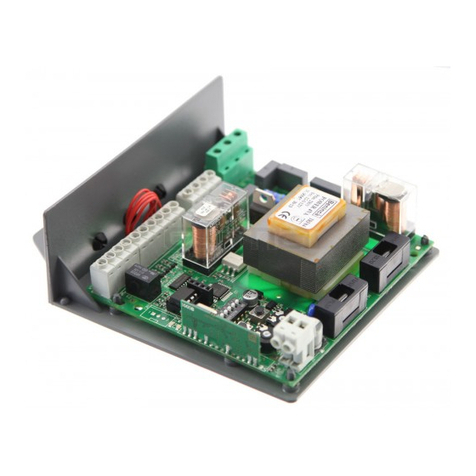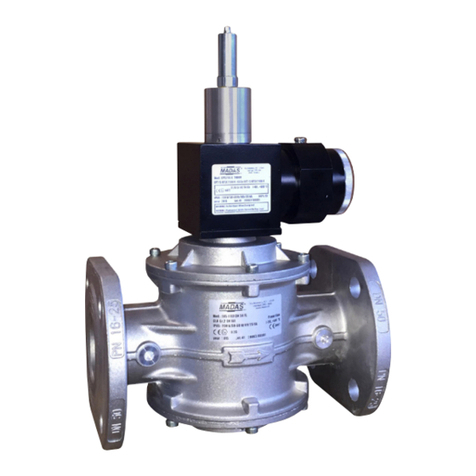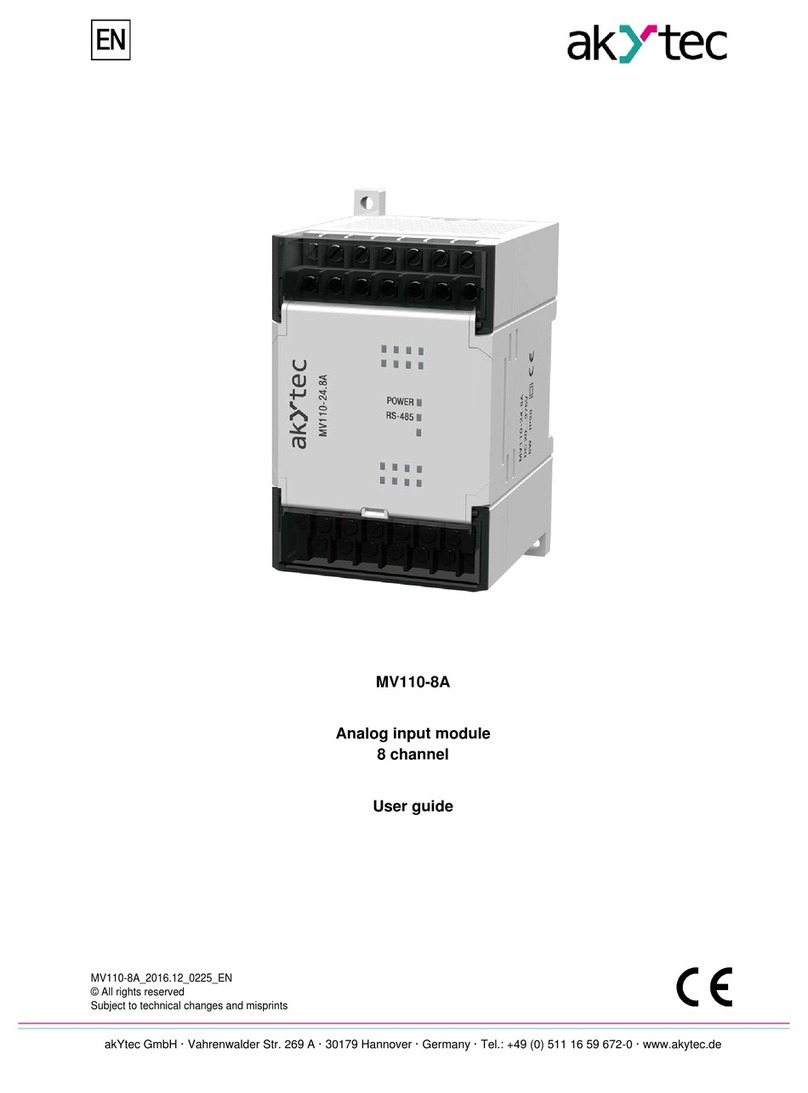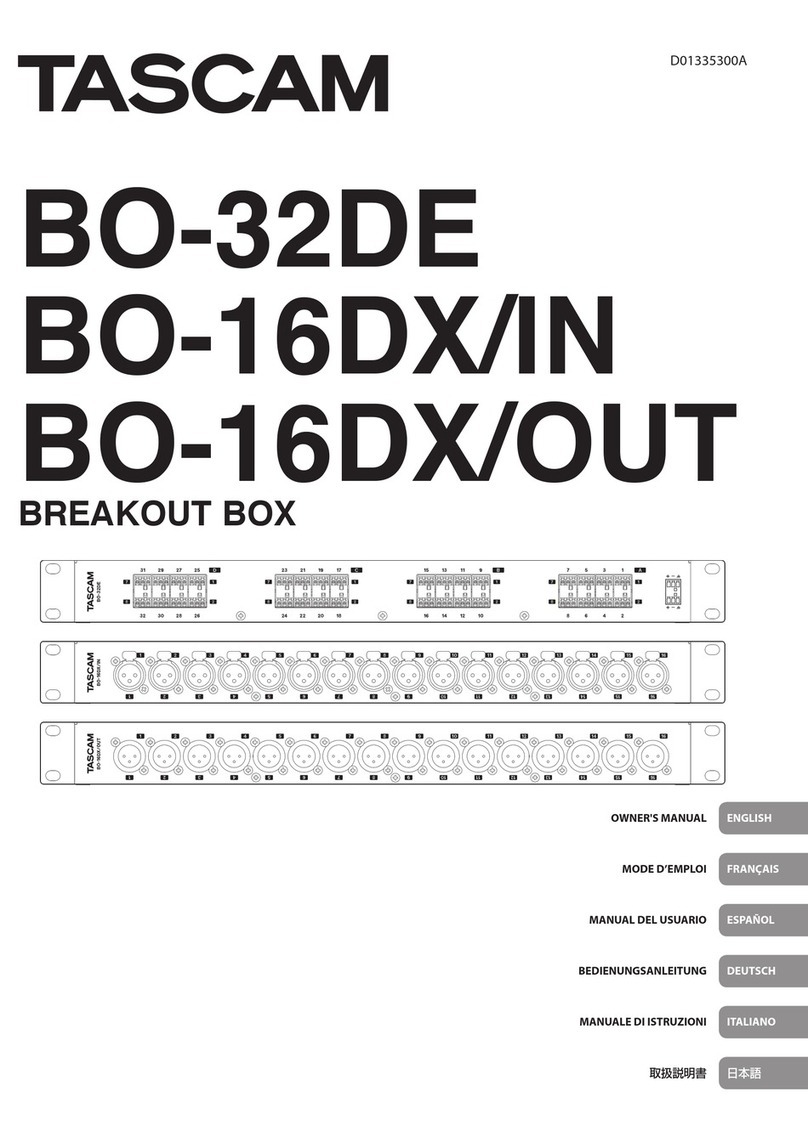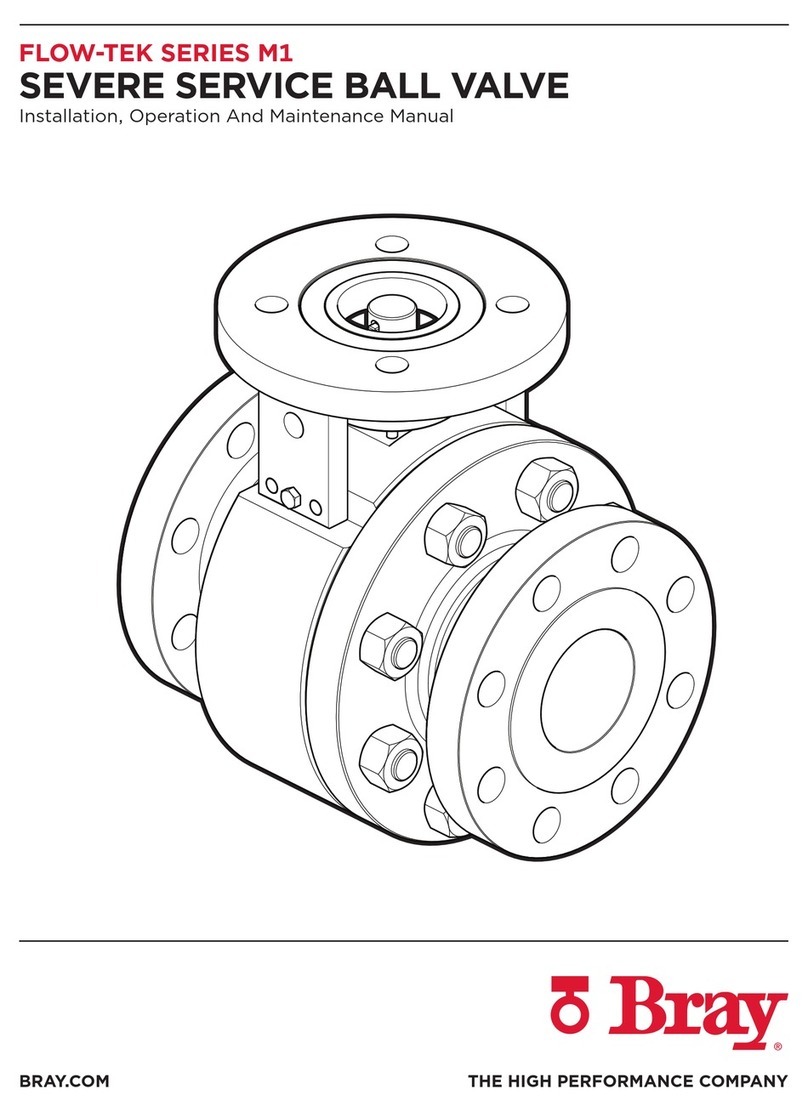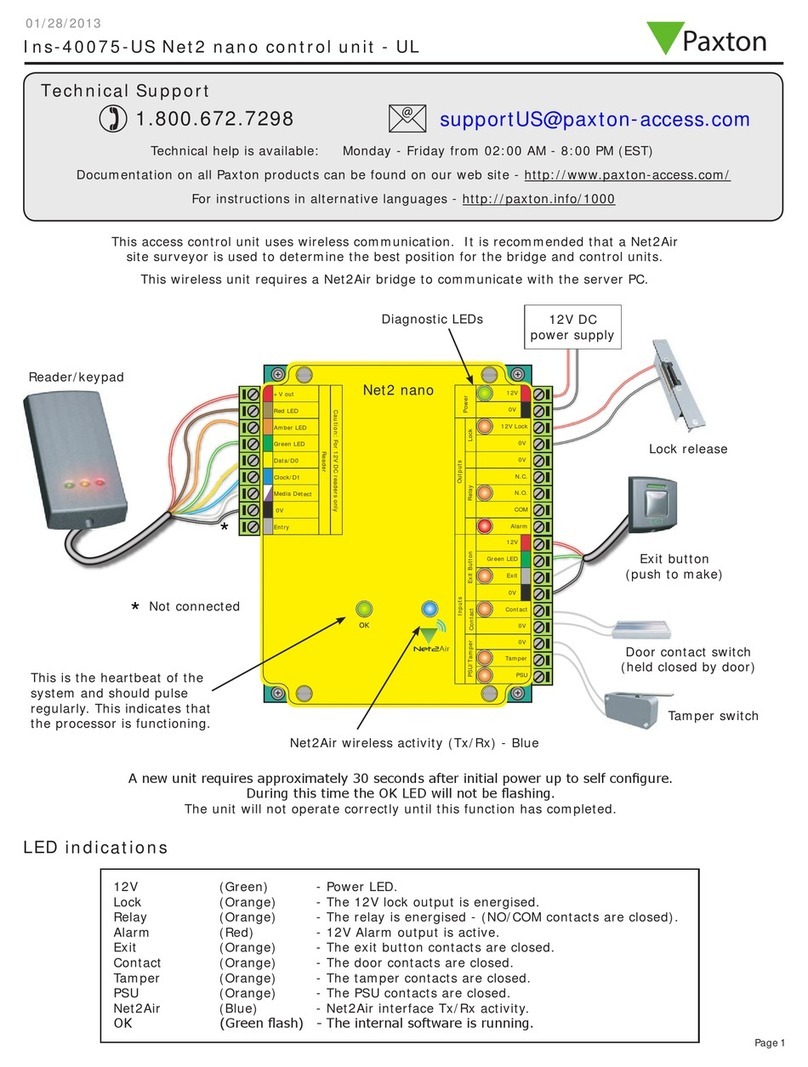Nibco T-413-B Product manual

CAUTION: Only qualified personnel should undertake the procedures outlined in this document.
NIBCO INC., its agents, representatives and employees assumes no liability for the use of these
procedures. These procedures are offered as suggestions only.
NIBCO Technical Services • Phone: 1.888.446.4226 • Fax: 1.888.336.4226 1
NIBCO INC.
WORLD HEADQUARTERS
1516 MIDDLEBURY ST.
ELKHART, IN 46516-4740
USA
PHONE: 574.295.3000
FAX: 574.295.3307
WEB: www.nibco.com
Review Date: 08/01/2017
Original Date: NA
Installation and Maintenance Guidelines
for
NIBCO®Bronze Swing Check Valves
1/4” to 3” Class 125, 150, 200 and 300
NIBCO®Performance Bronze®Lead-Free* Swing Check
Valves 1/2” to 2”
Figure Numbers
T-413-B,Y,W
S-413-B,Y,W
T-413-Y-LF*
S-413-Y-LF*
T-433-B,Y,W
S-433-B,Y
T-453-B,Y
T-453-B,Y
S-473-B,Y
T-473-B,Y
*Weighted average lead content ≤0.25%

NIBCO Technical Services • Phone: 1.888.446.4226 • Fax: 1.888.336.4226 2
1.0 GENERAL INFORMATION
1.1 SCOPE
These instructions are furnished for use in the installation, operation and maintenance of
NIBCO 1/4” to 3” Class 125, 150, 200 and 300 bronze swing check valves, with screwed
in bonnet, as well as, Lead-Free* Performance Bronze®swing check valves in potable
water applications.
1.2 GENERAL DATA
A. MANUFACTURER
NIBCO INC.
1516 Middlebury Street
Elkhart, IN 46516
Phone: (574) 295-3000
B. FIGURE NUMBERS AND DESCRIPTIONS
Figure Description
Number (Swing Check Valves)
T-413 Threaded end, screw in bonnet, W – Buna-N disc (no SWP)
Class 125 B – bronze disc, Y – PTFE disc,
LF – Lead-Free* Performance Bronze®(15 SWP)
S-413 Threaded end, screw in bonnet, W – Buna-N disc (no SWP)
Class 125 B – bronze disc, Y – PTFE disc,
LF – Lead-Free* Performance Bronze®(15 SWP)
T-433 Class 150 threaded end, screw in bonnet,
B – bronze disc, Y – PTFE disc
S-433 Class 150 solder end, screw in bonnet,
B – bronze disc, Y – PTFE disc
T-453 Class 200 threaded end, screw in bonnet,
B – bronze disc, Y – PTFE disc
T-473 Class 300 threaded end, screw in bonnet,
B – bronze disc, Y – PTFE disc
All threaded end preparations of valves meet American National Pipe Thread
(N.P.T.) requirements as per ASME B1.20.1.
All solder end valves meet the requirements of ASME Standard B16.22.
C. IDENTIFICATION PLATES
Identification of the bronze swing check valves is made by checking for the name
NIBCO cast onto the side of the valve body. The steam rating and CWP rating is
a cross reference with the figure number listed above. These valves are directional.
In order for them to function properly, they must be installed with the arrow pointing
with the direction of flow. The arrow for direction of flow is cast onto the side of the
body. In order to determine the type of seat that is used within the valve, it is
necessary to look into its end and determine the seat type. The bronze disc will be

NIBCO Technical Services • Phone: 1.888.446.4226 • Fax: 1.888.336.4226
3
metallic, the PTFE disc is always white in color and the Buna-N disc is black and
softer than the other two.
When more detailed information is required, the NIBCO Bronze & Iron Valve
catalog should be referred to using the valve figure number as the guide.
NIBCO
®
Lead-Free* HydraPure
®
valves can be identified by the double oval
symbol and “Si” – indicative of silicon Performance Bronze
®
– cast in the body of
the valve.
When more detailed information is required, the NIBCO Lead-Free Valve catalog
should be referred to using the valve figure number as the guide.
D. SERVICE
When installing valves for service in corrosive media, the NIBCO Chem-Guide may
be consulted for specific data or contact can be made with NIBCO Technical
Services. It is, however, the obligation of the user to make the ultimate decision of
fitness for use.
E. PRESSURE-TEMPERATURE RATINGS
Pressure and temperature ratings may be found in the Engineering section of the
latest printing of NIBCO catalog. This information is taken from applicable ASME
Standards.
NIBCO Lead-Free* Performance Bronze
®
maximum pressure-temperature
recommendation is 100psi at 300°F and are suitable for low pressure (15psi)
steam working pressure service.
F. CODES & REGULATIONS
A valve used under the jurisdiction of the ASME boiler and pressure vessel code,
the ANSI code for pressure piping, government or other regulations, is subject to
any limitation of that code or regulation and to the applicable ASME Standard.
Lead-Free* Performance Bronze
®
swing check valves conform to MSS SP-139, NSF/ANSI-61-8
Commercial Hot 180°F (includes Annex F and G), and NSF/ANSI-372. See NIBCO Technical
Bulletin
NTB-1216 Low Pressure/Low Temperature Valves Lead-Free* Standard Compliance –
MSS SP-139 & 145 for further clarification of lead-free standards.

NIBCO Technical Services • Phone: 1.888.446.4226 • Fax: 1.888.336.4226 4
G. PRODUCTION TEST PROCEDURES
Valves are pneumatically shell tested and seat tested at a pressure of 80 psi in
accordance with Federal Specifications and MSS SP-80 and/or MSS SP-139
Manufacturers Standardization Society requirements.
H. PRINCIPAL DIMENSIONS
Principal dimensions of the valve are specified in the appropriate catalog.
1.3 DETAILED DESCRIPTION
The bronze check valves listed above and covered in these instructions are bronze valves
made of ASTM B62 material for Class 125 and 150 valves and from ASTM B61 material
for Class 200 and 300 valves.
The Lead-Free* Performance Bronze®swing check valves listed above and covered in
these instructions are made from UNS Alloy C87850.
Check valves are used in systems which allow flow to move freely in the direction of the
arrow cast onto the side of the valve body, however, should flow reversal occur, the disc
in the valve will go to the closed position and not allow flow to reverse. The primary function
of a check valve is to prevent backflow.
The disc is centered over the seat in the valve by means of a hanger which is hinged by
means of a pin to the main valve body. Therefore, any movement of the disc is in a true
arc and the disc will always center itself over the seat in the valve body. On NIBCO bronze
check valves, no control of the disc can be affected from the exterior of the valve body.
Lever and weights are available only on NIBCO iron check valves.
The body and bonnet are held together by threads of the male and female type; male
threads being on the bonnet section and female threads being within the body. There are
no gaskets between the body and bonnet to affect seals. This is strictly a metal-to-metal
seal as required by standards. This general arrangement is used on all of the listed swing
check valves.
2.0 INSTALLATION
2.1 PRELIMINARY INFORMATION
The bronze check valves may be installed in both horizontal and vertical lines with upward
flow or in an intermediate position. They will operate satisfactory in a declining plane no
more than 15°. Under no circumstances should the valve be installed in a horizontal line
with the bonnet facing in the vertical down position, this will not only trap fluids, but it will
not allow the valve to function in the check position.
NIBCO recommends that check valves should not generally be used in close proximity to
reciprocating pumps and compressors. The constantly fluctuating pressure curve passes
pulsations to the moving parts of the valve and severely shortens the life of the valve due

NIBCO Technical Services • Phone: 1.888.446.4226 • Fax: 1.888.336.4226 5
to wear and causes premature failure. Loose parts can also be passed down the line which
would compound the problem. Screw type and centrifugal pumps and compressors that
deliver a constant pressure curve do not have this problem. In some carefully designed
systems check valve have been used successfully by incorporating surge tanks, hammer
arrestors and other piping modifications with the valve placed downstream from the pump.
The ultimate decision for fitness of use however lies in the hand of the end user and his
piping designer.
NOTE: Check valves should never be installed immediately adjacent to a pump discharge
or change in direction. Check Valves should be installed downstream from all sources of
line turbulence, including fittings and valves, at a minimum of 5x thenominal pipe diameter
(preferably 10x) with straight piping to provide laminar flow.
All NIBCO check valves are shipped in cardboard boxes for protection against exterior
damage and accumulation of dust or dirt on the delicate seating surfaces. The boxes are
not waterproof and, therefore, require that they be protected from the weather.
2.2 HANDLING AND INSTALLATION
Each valve should be handled very carefully and not dropped or exposed to a dirty
environment before it is assembled into the system. Under no circumstances should the
valve be installed into the line by wrenching through the valve body, this means that when
a valve is being threaded onto a pipe, the wrench should be on the end where the joint is
being made.
It is very important to make certain that the threads of the pipe are clean at all times and
machined properly. When improperly tapered pipe is screwed into the female valve
threads, the pipe can be screwed so deep that it can ruin the seats of the valve. Care
should also be used to assure that the valve is not over tightened because the steel pipe
is much stronger that the bronze material, therefore, the bronze will distort and cause valve
malfunction or leakage at the joint. When screwing the valve onto the pipe, the disc should
remain in the closed position if possible.
On solder end type valves it is necessary to make sure that the valve disc is in the open
position while it is being heated for soldering into the line. The major caution here is that
the valve not be overheated and that the proper amount of solder is used so that it does
not flow into the valve, fouling the seat or damaging the disc, rendering it inoperable.
Attached to this manual, in the Appendix, are proper general instructions for soldering, brazing
and threading installation of valves. For lead-free solderability information, see NIBCO Technical
Bulletin NTB-0910 Lead-Free* Silicon Bronze Alloys Soldering & Brazing Recommendations
For soldering or threading, the recommended best practice is to remove the bonnet and
disassemble the hanger assembly from the valve; for brazing installation it is mandatory
that the hanger assembly be removed prior to assembly.
It is always essential that the bonnet be removed with great care. The necessary steps to
do this must be accomplished with a suitable wrench with flat jaws (do not use pipe
wrench). Use a properly sized wrench for the bonnet cap to loosen the bonnet. Generally
it is best to loosen the bonnet with a slight impact to the wrench. After the bonnet is

NIBCO Technical Services • Phone: 1.888.446.4226 • Fax: 1.888.336.4226 6
loosened, it is absolutely necessary to make sure that no nicks or scratches be put on the
body or bonnet seating surfaces.
When removing the hanger assembly, especially for brazing installation, and for models
valves which have PTFE or Buna-N discs, when soldering, it is first necessary to remove
the bonnet then loosen the side plug and take it out. After the hinge pin is removed the
hanger and disc assembly can be taken out of the bonnet area of the valve. While the
PTFE and Buna-N disc are not very susceptible to nicks, it is still wise to handle them with
care so that they do not get damaged before they are put back into the valve for
reassembly.
When reassembling the valve, it is important to check the interior of the valve to see that
seats are totally clean and have not been damaged due to high temperature heat applied
during the brazing operation. If there is doubt about how much temperature has been
applied to the valve, it is a wise practice to take a flat disc and put blueing on it so that it
can be determined if there are any high spots on the seat. If there are high spots, then a
lapping operation should be done to bring the valve back into functional position. After the
hanger and disc are put in to place, the hinge pin should then be pushed into position.
The side plug should be cleaned and reinstalled into its original position. Before putting
the bonnet onto the valve, a check should be made to assure that the disc and hanger
move freely.
When assembling the bonnet to the valve body, a slight amount of lubricant equivalent to
about 10 weight oil should be put on the bonnet joint sealing surface of the body and the
bonnet. (Some lubricants can be a serious contaminant to the line fluid.
Consideration must be given to the application when any lubrication is used). This
gives lubrication so that good tightening pressures can be applied. The wrench should be
given a slight impact for the final tightening.
After the valve has been installed, the valve should be tested to make sure that it opens
and closes easily and that the bonnet joints or pipe joints are not leaking.
For more details on proper check valve selection and installation, see NIBCO Technical
Bulletin NTB-0703 Design and Use of Check Valves.
3.0 OPERATION
Check valves seal adequately when the back pressure is high, but some leakage is
expected when the reverse pressure is relatively low. In testing procedures, a check valve
is allowed to leak 4 times as much in the reverse flow (check) position as a metal- seated
gate valve. In other words, the allowable leakage rate for gate valves is 10ml per nominal
inch of diameter per hour; a check valve has an allowable leakage rate of 40ml per nominal
inch of diameter per hour. This is in accordance with MSS Standard Practices for check
valves.
(1 ML=.035 oz.).
The check valves described in this manual are not to be used as foot valves on a pump
or pressure regulating devices. Their construction is not suited to these types of
requirements.

NIBCO Technical Services • Phone: 1.888.446.4226 • Fax: 1.888.336.4226 7
For more details on check valves, see NIBCO Technical Bulletin NTB-0596 Check Valve
Cracking Pressure.
4.0 TROUBLESHOOTING
4.1 LEAKAGE THROUGH THE BONNET JOINT
If the bonnet joint leaks, the valve should be isolated and depressurized. The bonnet
should be removed according to instructions in Section 2. The seating surfaces of the
bonnet and body should be closely inspected. If there is any scratch or mark on these
surfaces, then it is necessary that a flat surface sanding plate of 400 grit be used on the
body to remove all the scratches. After the scratches are removed, blueing should be
applied to a flat plate and put on the bonnet surface, if there are no high spots on the
bonnet surface, then it is prepared for reassembly. On the bonnet surface, if there are
scratches or nicks that are evident, it is necessary that it be indicated in a lathe and a very
slight cut taken off of the bonnet sealing surface at an angle of approximately 2-1/2”
tapered outward with a very fine 32 RMS finish. The two body bonnet surfaces then can
be reassembled using procedures in Section 2.
4.2 LEAKAGE THROUGH THE VALVE SEAT
Leakage across the valve seat is generally due to foreign matter lodged in the seat.
Occasionally, such foreign material can be washed away by allowing flow through the
valve. If the leakage persists, disassemble the valve and examine the seat surface on the
wedge and the seat surfaces within the body.
Minor scratches can be corrected by lapping the bronze valve disc while the disc is in the
valve body. The bonnet is removed, lapping compound is put on the seating surfaces of
the disc and the valve body, and on top of the disc is a screwdriver slot which can be used
to twist the disc while holding a mild amount of pressure on it and lapping the surfaces.
This lapping will generally remove small scratches in the seat areas and make the valve
function normally. It is normally advisable to remove the hanger assembly to clean off the
lapping compound and blue the surfaces to make sure there are no high spots. After this
lapping operation is done, the valve can be reassembled.
In the case of rubber or PTFE seated valves, it is best to get new replacement discs and
install them.
5.0 MAINTENANCE
5.1 TOOLS AND EQUIPMENT
Standard wrenches and tools are suitable for servicing valves as follows:
A. For removing bonnet, an open end wrench of the proper size to fit the bonnet nut is
required. Small wrenches are also required of the socket type to remove the side
plugs. Needle nose pliers are recommended to pull the hinge pin out of the side of the
valve body. Never use a pipe wrench to remove or reassemble the valve bonnet.

NIBCO Technical Services • Phone: 1.888.446.4226 • Fax: 1.888.336.4226 8
B. Use flat plate glass with 400 grit sandpaper to polish the disc or bonnet sealing surface
of body. Machinist blueing should be used to test for high spots on body seats and
disc.
6.0 SPARE PARTS
Normal spare parts to be maintained on hand are listed on the NIBCO spare parts list.
If the bonnet or body are damaged it is normally less expensive to remove the entire valve
from the line and install a new one.
When placing an order for spare parts, it is necessary to give the size, the valve figure
number found on the aluminum identification plate and also the serial letter which is cast
into the valve body on its side. This will be an alphabetical letter, A, B, C, D, etc. It is vital
to give the serial letter because over a period of time the valve designs have had
modifications which could render the parts useless if they are of a different letter series.
7.0 MAJOR REPAIRS
For other repairs or replacements not covered in the above description, contact the
Technical Services Department of NIBCO INC. for special instructions. Always give the
figure number and size shown on the identification plate affixed to the valve along with the
general serial letter.
8.0 Chemical Compatibility
Please consult the most current edition of the NIBCO Chem-Guide for recommendations
regarding chemical compatibility of material exposure to specific media and media-
treatment additives. The NIBCO Chem-Guide is a general guide on the topic of chemical
compatibility and is by no means an exhaustive resource on the subject. Ultimately, proper
material selection is the responsibility of the installer and/or end-user, taking into account
all aspects of a system’s design and intended use.
9.0 Galvanic Potential in Piping Systems
Galvanic corrosion or dissimilar metal corrosion is an electrochemical process that is
created through the electrical interaction of two different metals under the influence of a
conductive media (i.e.an electrolyte). An electrolytic cell, much like a battery, is generated
by these dissimilar metals using water as the electrolyte. The electrical charge, developed
within the electrolytic cell, drives a preferential attack on the more electrically active metal
with the water acting as the recipient of the discarded metal ions. Such galvanic attack is
often encountered in service where iron or steel components are installed, and later
corrode, in a largely copper piping system. Please consult NIBCO Technical Bulletin NTB-
0714 Dielectric Products Relative to Electrolysis and Galvanic Corrosion.
For any technical enquiries please call NIBCO Technical Services.

NIBCO Technical Services • Phone: 1.888.446.4226 • Fax: 1.888.336.4226 9
Appendix - General Installation Recommendations
SOLDERING
1. Cut tube end square. Ream, deburr, and check for dry fit. Do not use tubing that is out of round
or fits so tightly into the solder cup that it must be forced or hammered into place.
2. Prior to preparing a solder cup on a valve:
Open a ball valve fully, to avoid damaging the ball
Close a gate or globe valve fully, to avoid getting sanding fines in the seat well or damaging
the sealing surfaces
Remove the hanger assembly on a swing check valve, especially on soft seal discs such
as Buna-N or PTFE discs.
Use sand cloth or a steel wire brush to clean both ends to a bright metal finish. Steel wool is not
recommended. Apply flux immediately upon cleaning surfaces of joints to be soldered. If fluxed
parts are allowed to stand, the water in the flux will evaporate, and dried flux is liable to flake off,
exposing metal surfaces to oxidation.
3. Apply flux to outside of tube and inside of solder cup. Surfaces to be joined must be completely
covered. Use flux sparingly.
4. Assemble joint by inserting tube into socket hard against the stop. The assembly should be
firmly supported so that it will remain in alignment during the soldering operation.
Prior to soldering:
Close a ball valve to trap the seats against the surface of the ball.
Open fully a gate or globe valve, to prevent soldering the closure member to the seats.
Remove the hanger assembly on a swing check valve.
Take care to not overheat a spring-loaded check valve.
oOn leaded-alloy bronze spring-check valves, wrap the body in a wet rag
NOTE: On one-inch and larger valves, it is difficult to bring the whole joint up to temperature at
one time. It will frequently be found desirable to use a double-tip torch to maintain the proper
temperature over the larger area. A mild pre-heating of the whole socket area is recommended.
Apply heat to tube first. Transfer as much heat as possible through tube into valve. Avoid
prolonged heating of valve itself. Never direct the flame into the capillary gap between the tube
and solder cup – always work the flame away from the gap. Evenly apply the flame across the
joint, from base of the cup to a inch past the tubing, sweeping the entire circumference of the cup
and tube in continuous motion and not dwelling on any one point.
When flux appears liquid and transparent, start sweeping flame back and forth along axis of joint
to maintain heat on parts to be joined, especially toward base of valve socket, while feeding solder
into the capillary gap.
5. Use just enough solder: with wire solder, use 3/4" for a 3/4" valve, etc. If too much solder is
used, it may flow past tube stop and clog sealing area. When the joint is filled, a continuous run
of solder alloy will be visible and drip from the bottom of the joint.

NIBCO Technical Services • Phone: 1.888.446.4226 • Fax: 1.888.336.4226 10
For vertical joints, any excess flux that runs down the tubing should be wiped clean, before
applying solder, as this will prevent solder from “chasing” the flux and eliminate wasted runs of
solder on the tubing.
6. Remove excess solder with small brush or rag while wet, leaving a fillet around end of valve as
it cools.
7. Allow a solder joint to cool to room temperature – Never shock a solder joint cool with water.
This could damage the integrity of the filler material.
BRAZING
1. Cut tube end square. Ream, deburr, and check for dry fit. Do not use tubing that is out of round
or fits so tightly into the solder cup that it must be forced or hammered into place.
2. Prior to preparing a solder cup for brazing on a valve:
Close a gate or globe valve fully, to avoid getting sanding fines in the seat well or damaging
the sealing surfaces
Remove the hanger assembly on a swing check valve.
Disassemble a three-piece ball valve and prepare the end connections.
WARNING: NEVER attempt to braze a two-piece ball valve or check valve.
Use sand cloth or a steel wire brush to clean both ends to a bright metal finish. Steel wool is not
recommended.
Apply flux immediately upon cleaning surfaces of joints to be brazed. If fluxed parts are allowed
to stand, the water in the flux will evaporate, and dried flux is liable to flake off, exposing metal
surfaces to oxidation.
3. Apply flux to outside of tube and inside of solder cup. Surfaces to be joined must be completely
covered.
4. Assemble joint by inserting tube into socket hard against the stop. The assembly should be
firmly supported so that it will remain in alignment during the brazing operation.
Prior to brazing:
Open fully a gate or globe valve, to prevent soldering the closure member to the seats.
Remove the hanger assembly on a check valve.
5. The best recommended fuel source is an oxy-acetylene flame.
NOTE: On one-inch and larger valves, it is difficult to bring the whole joint up to temperature at
one time. It will frequently be found desirable to use a double-tip torch to maintain the proper
temperature over the larger area. A mild pre-heating of the whole socket area is recommended.
Sweep flame around tube in short strokes up and down at right angles to run of tube. To avoid
burning through tube, the flame should be in continuous motion and not allowed to dwell on any
one point. Never direct the flame into the capillary gap between the tube and solder cup – always
work the flame away from the gap. Apply flame to valve at base of socket. Heat uniformly,

NIBCO Technical Services • Phone: 1.888.446.4226 • Fax: 1.888.336.4226 11
sweeping flame from valve to tube until flux on valve becomes quiet. Avoid excessive heating of
valve.
6. Apply brazing wire or rod at point where tube enters valve socket. Keep flame away from rod
or wire as it is fed into the joint. Move flame back and forth as alloy is drawn into joint. When the
proper temperature is reached, the brazing alloy will flow readily into the capillary gap between
the tube outer wall and valve cup. When the joint is filled, a continuous rim of brazing alloy will be
visible.
The strength of a brazed joint does not vary appreciably with the different brazing materials, but
depends to a large extent upon the maintenance of proper clearance between the outside of the
tube and the valve cup. The interior dimensions of silver brazing valve cups are machined to the
closest tolerances and finished smooth to promote full capillary attraction.
NOTE: Care should be observed in cleaning and in removing residues of the cleaning medium.
Attempting to braze a contaminated or improperly cleaned surface will result in an unsatisfactory
joint. Silver brazing alloys will not flow over or bond to oxides. Oily or greasy surfaces repel fluxes,
leaving bare spots which oxidize and result in voids and inclusions.
7. Allow a solder joint to cool to room temperature – Never shock a solder joint cool with water.
This could damage the integrity of the filler material.
THREADING
Grit, dirt, or any foreign matter accumulated in the pipe can hinder efficient valve operation and
seriously damage vital valve parts. Thoroughly clean pipe internally before assembly. When
threading pipe, gauge pipe threads for size and length to avoid jamming pipe against seat and
disc. Thoroughly clean threaded end to remove any harmful steel or iron deposits.
For a long-term integrity of a joint, use either PTFE tape or pipe compound. Never use both
materials to assemble a threaded joint.
If pipe compound is used, apply sparingly on pipe threads, never on valve threads. Do not allow
any pipe compound into valve body, in order to avoid damage to disc and seat, and otherwise
foul the valve’s sealing performance.
Before installation, check the line of flow through valve, so that valve will function properly.
Close valve completely before installation. Apply an open-end or adjustable wrench on the hex of
the valve adjacent to the pipe joint to be made. Never use a pipe wrench on the valve
connection/hex end, as this can lead to possible distortion of the valve.
Never “wrench through” a valve; i.e., never drive a pipe nipple into one side of a valve in an
attempt to tighten both pipe nipples/connections at one time. Always assemble each threaded
joint by isolating the assembly to a single end of the valve.
After installation of valve, support line; a sagging pipe line can distort valve and cause failure.
This manual suits for next models
18
Table of contents
Other Nibco Control Unit manuals

Nibco
Nibco Pressystem User manual
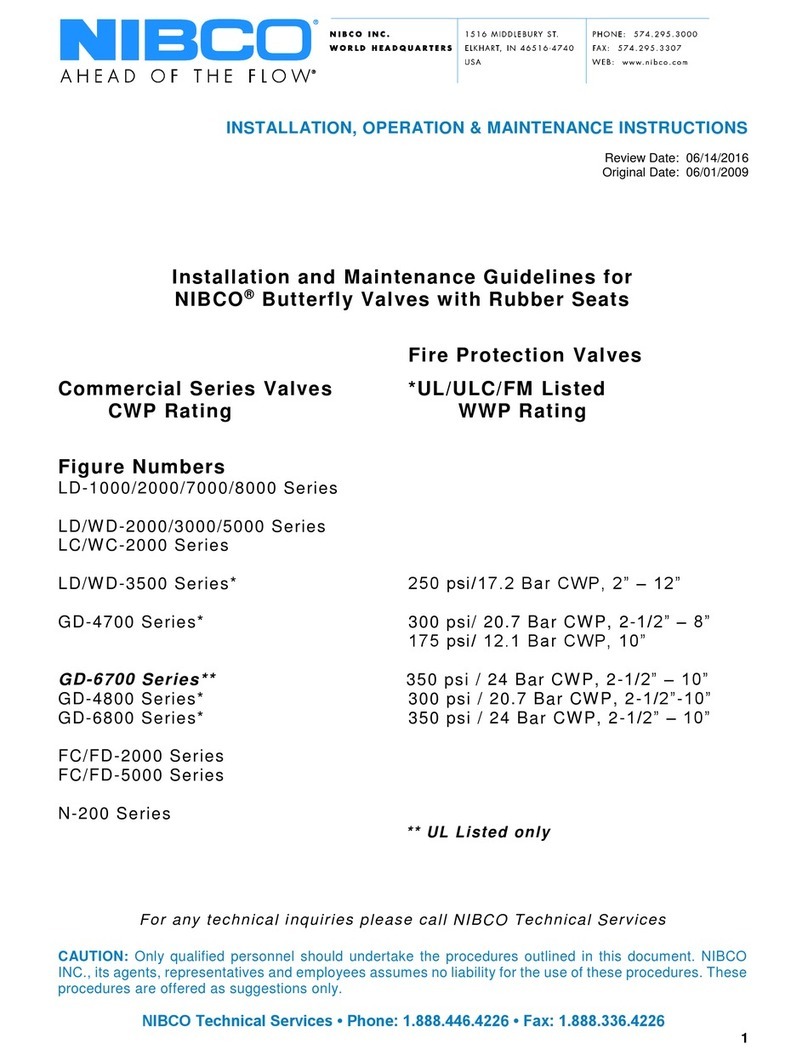
Nibco
Nibco LD-1000 Series Product manual
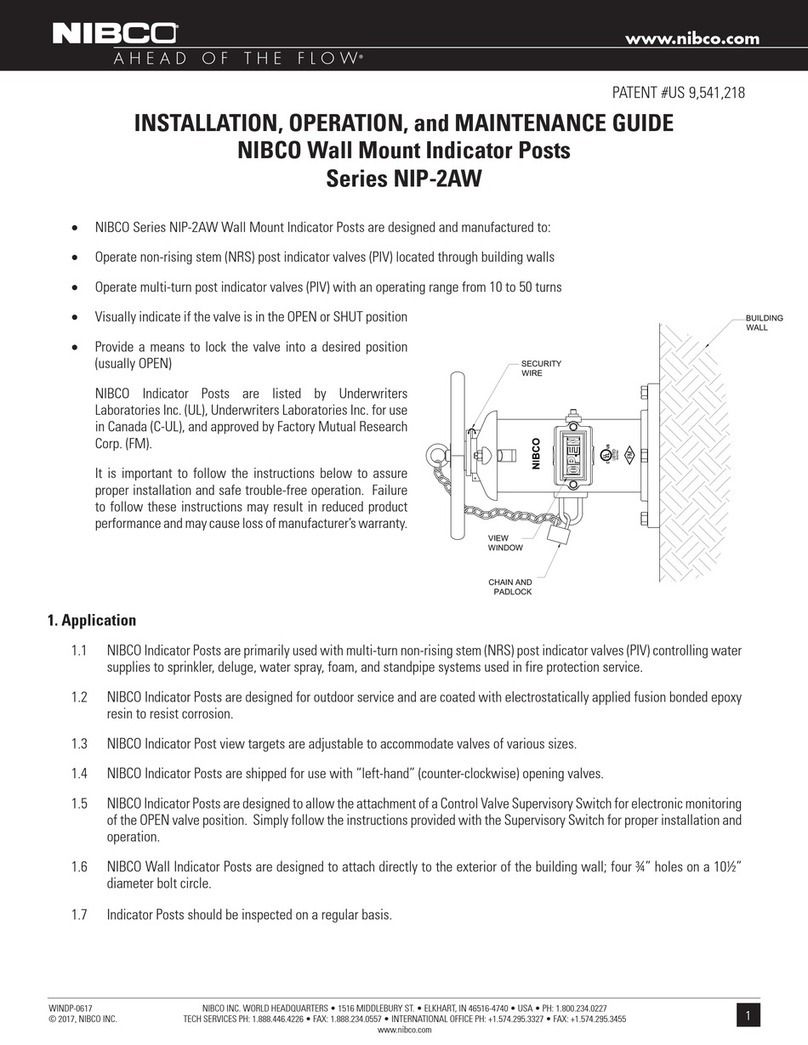
Nibco
Nibco NIP-2AW series Manual

Nibco
Nibco LD-7000 Series Guide
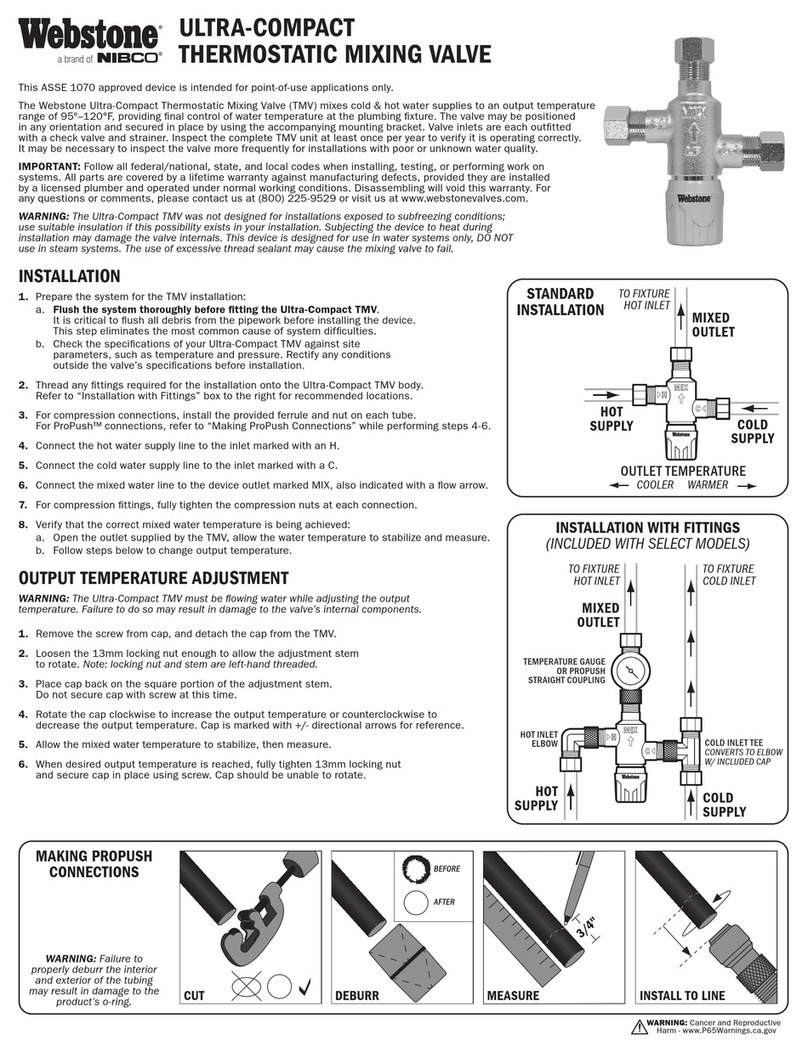
Nibco
Nibco Webstone Series User manual
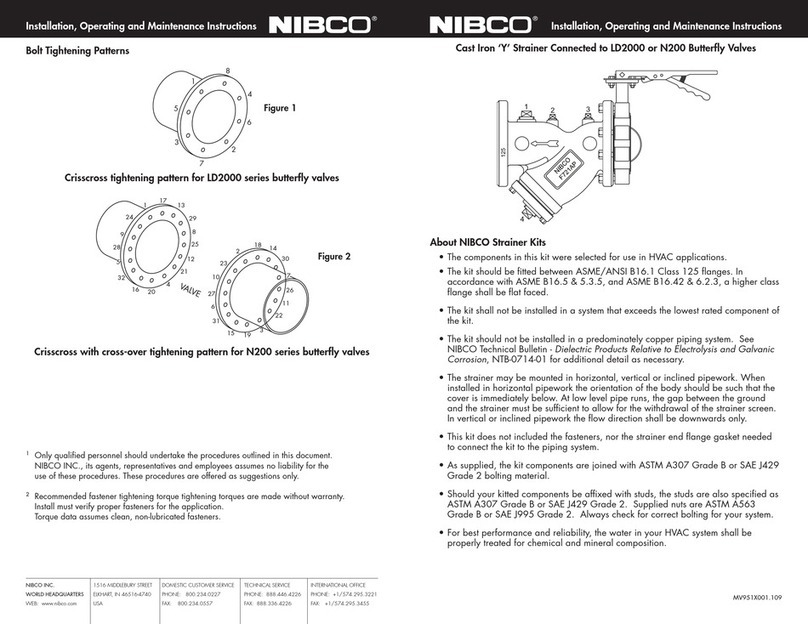
Nibco
Nibco LD2000 Series Assembly instructions
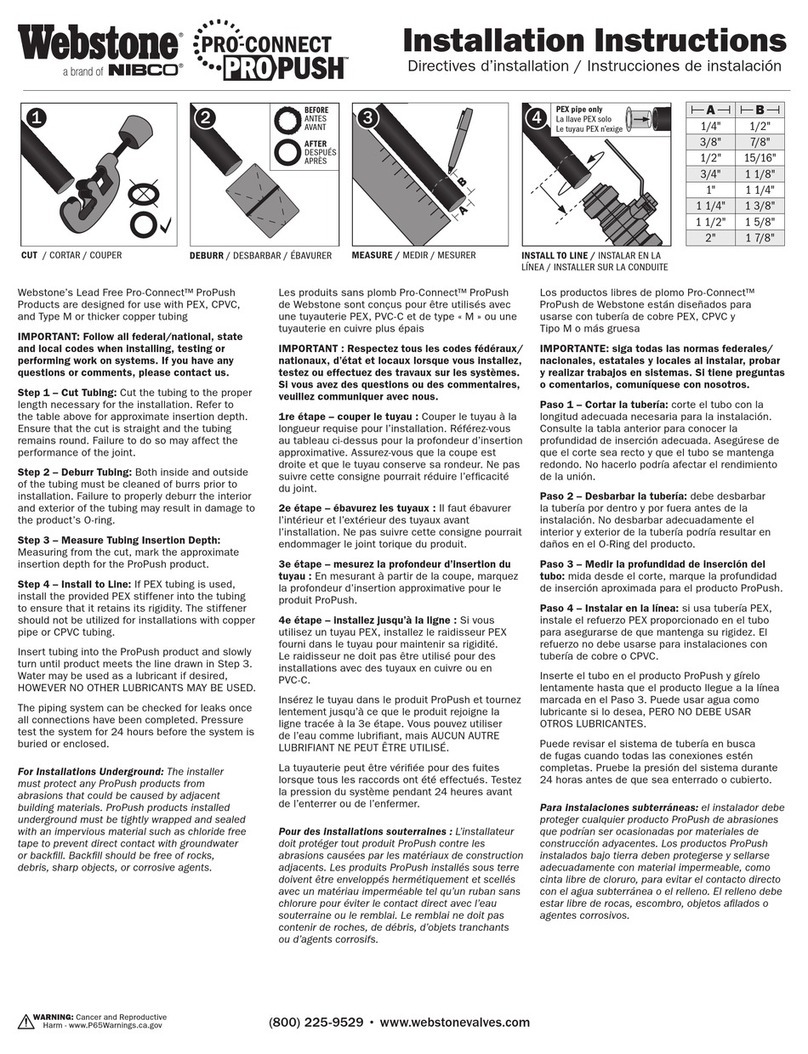
Nibco
Nibco Webstone Pro-Connect ProPush Series User manual
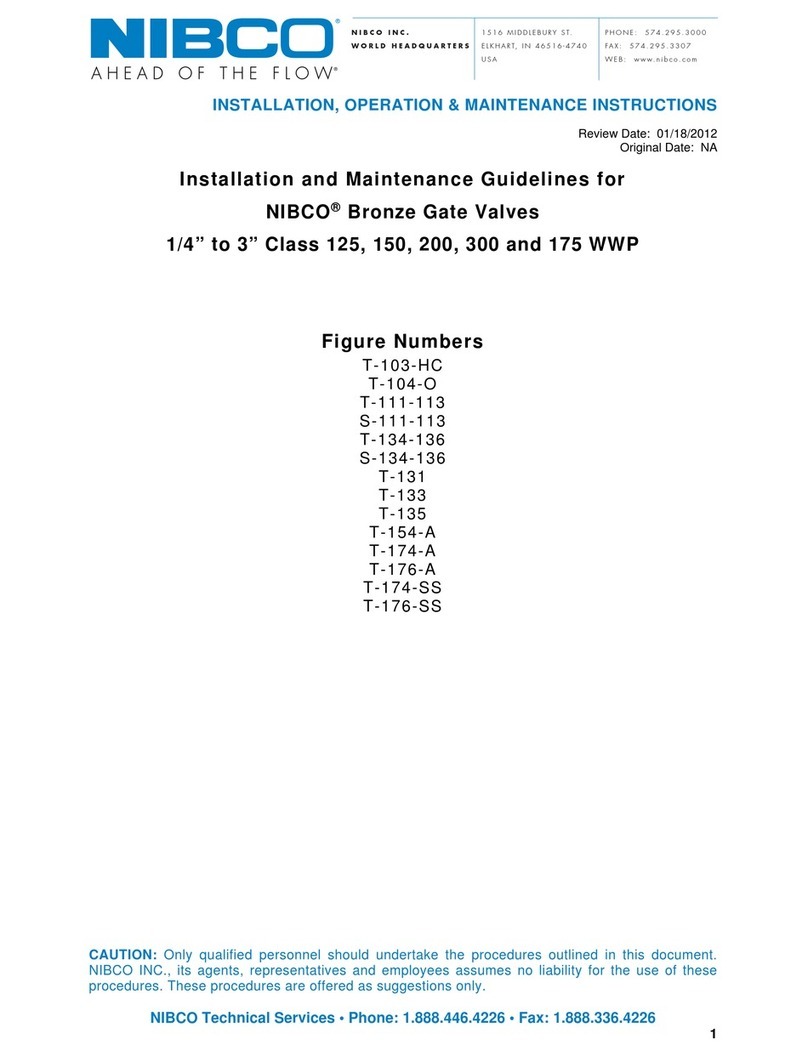
Nibco
Nibco T-103-HC Product manual
